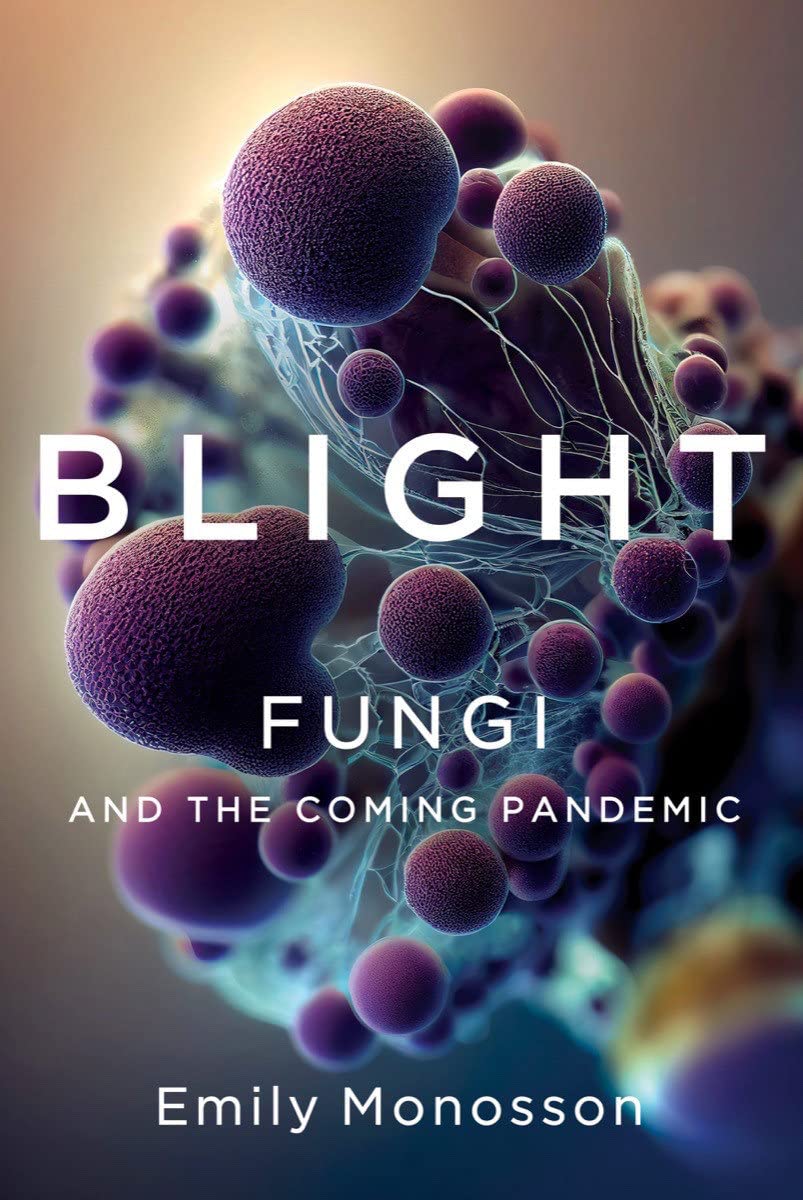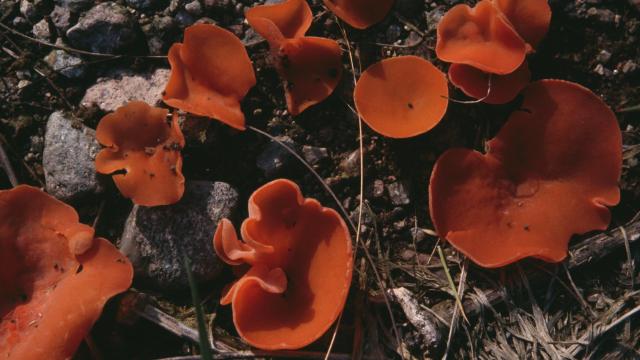Fungi are some of the strangest living things on Earth. Some are single-celled organisms like bacteria, other are multicellular beings akin to plants and animals. Some can even shapeshift between these forms of life. However they look, they’re an integral part of the environment: Many fungi act as nature’s recyclers, breaking down dead organic matter into something that can be reused by others. And we regularly rely on fungi in a variety of ways, including as food.
But fungi can also be dangerous and deadly. Some species are notorious animal or agricultural pests; others can make people sick. In her upcoming book out this July, Blight: Fungi and the Coming Pandemic, toxicologist and writer Emily Monosson makes the case that the fungal problem is only going to get worse unless we do something soon.
I spoke with Monosson about her inspiration for the book, why fungi are such a menace, and how the zombies from HBO’s latest hit, The Last of Us, could have been made even more disgusting. This following conversation has been edited and condensed for clarity.
Ed Cara, Gizmodo: The last few weeks has provided people lots of opportunity to think about fungi [as of this interview’s publication, The Last of Us is approaching its season one finale]. So it’s pretty good timing for your book to be coming out.
Monosson: Yeah, it’s kind of crazy. Halfway through the pandemic. I remember asking my editor, “Should I really start writing this? I mean, who’s gonna read a book about pandemics after this pandemic?” People still might be tired by the time it comes out in July, but at least the awareness is raised.
Gizmodo: You’ve written on several topics where the underlying theme is about evolution. But what made you want to focus on fungi specifically?
Monosson: I’d say first that it was a disease called late blight, which afflicted tomatoes in 2009, and just ran up the East Coast and creamed the tomato crops. It turns out that was actually a fungus-like organism. And it’s the same kind of organism that caused blightened potatoes in Ireland all those years ago.
And then a few years later, there was a paper in Nature, by a group of scientists who wanted to raise awareness about fungal pathogens across species as important emergent diseases. So that paper, combined with seeing what happened with something like late blight, made me want to think more about fungal pathogens.
At the time, I proposed a book on that, but it didn’t go anywhere. But they just kept coming. In 2016, the CDC started talking about Candida auris, this human pathogen, a yeast, that was getting into hospitals. And so that was just sort of like: OK, this is a real problem, and it’d be good to try to get the word out. Because these things aren’t going away.

Gizmodo: Your book talks about a coming pandemic. People would hear that and think about something infecting us. But you’re covering a myriad of ways that fungi can make life a nightmare for people, not just through directly making us sick. What is it about fungi that makes them such a dangerous thing to try to deal with?
Monosson: If you ask the scientists who work in this and after learning more about it, I would say they’re an environmental organism. Usually they produce spores, which can be long lasting. Some spores might last days but other kinds can last weeks, months or even decades. That is very different from most bacteria and things like viruses. So one problem is that once a fungus takes hold, and finds a new host, and starts reproducing, it’s very difficult to get rid of it.
And then the other thing is that they don’t always need us or a specific animal as hosts. Some fungi can live in other kinds of hosts. And so again, it just means that they’re not going away once they’ve taken hold in a new region or new environment. Even once you treat a fungal infection — that doesn’t mean that it’s necessarily gone from the surrounding environment. It can still appear in other places down the road, perhaps.
Gizmodo: What’s happening now in the world that’s making fungi a growing threat?
Monosson: Most of the diseases, most of the pathogens I write about, emerged in the last 100 years. And they probably emerged because we moved the fungus from its own territory to somewhere else, and it found new hosts, and it was pretty happy in those new hosts — these new hosts didn’t have any defences. We trade, we move, we move plants and animals around. The number of miles travelled by humans, and the number of humans travelling around the globe has skyrocketed. So all this movement is just a great opportunity for hitchhiking fungi. And then there’s climate change, which is enabling some fungi to expand into new territory, or into new hosts, possibly.
And the other thing is in humans. Most fungal infections in humans are called opportunistic. And we’ve changed as a population. There are more people who are immunocompromised now because of either diseases or drugs that they’re taking. And these drugs are great improvements in health care, but they also leave some people more vulnerable to infections. So we’ve changed too.
Gizmodo: The key lesson of the last few years is that viruses are still a major threat to humanity. And with bacteria, we’ve got antibiotic resistance, which is more of a slow-moving iceberg ahead. And you’re arguing that we’re setting the stage for fungi to become an ever-present threat. Do you feel like there are still measures we can take now to prevent them from becoming a more serious problem?
Monosson: I think one of the best things is awareness. And if you’ve got awareness, then prevention would involve a lot of things. If you want to go to the extreme, some people would like to say that maybe we shouldn’t be trading animals or plants anymore. Something less extreme would be finding better ways to detect the presence of fungus or fungal spores on organisms that are being moved around the world. And maybe part of it could be prevention through vaccination, if vaccines can be developed. But I think that’s a hard thing, because you don’t know what’s gonna come next. What species is going to be the next emergent fungal pathogen?
Gizmodo: Obviously, the show The Last of Us has put fungi on everyone’s mind. But have you gotten to see it, and if so, what was your take on on how they approach fungi?
Monosson: I have seen the show, I really like it. I don’t like zombie shows normally, but I like the show. And I loved the beginning, when they had these scientists on a talk show in the 1960s, and you had one talking about fungus being a problem and how climate change could make it worse. And that has kind of happened, if not as big a scale. I don’t think people becoming fungal zombies is gonna happen. But it raises lots of different. interesting science questions that are fun to talk about.
Probably my biggest gripe is with something that changed from the games to the show. In the games, I believe, spores are more important, but there’s just no mention of them in the show. But they do mix a bunch of different aspects of fungi in interesting ways — things like the underground fungal hyphae.
And then there was something that I was thinking about the other day. How we eat is that we ingest food and then we digest it with enzymes. But fungi release their enzymes first and then digest their food. That’s how they degrade things in the environment. So instead of zombies biting people, they really should be spitting at them.
Gizmodo: That could definitely up the body horror vibes.
